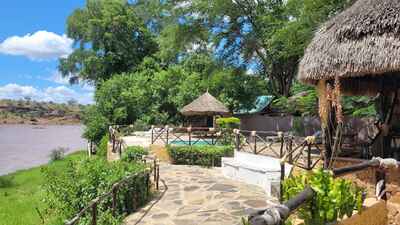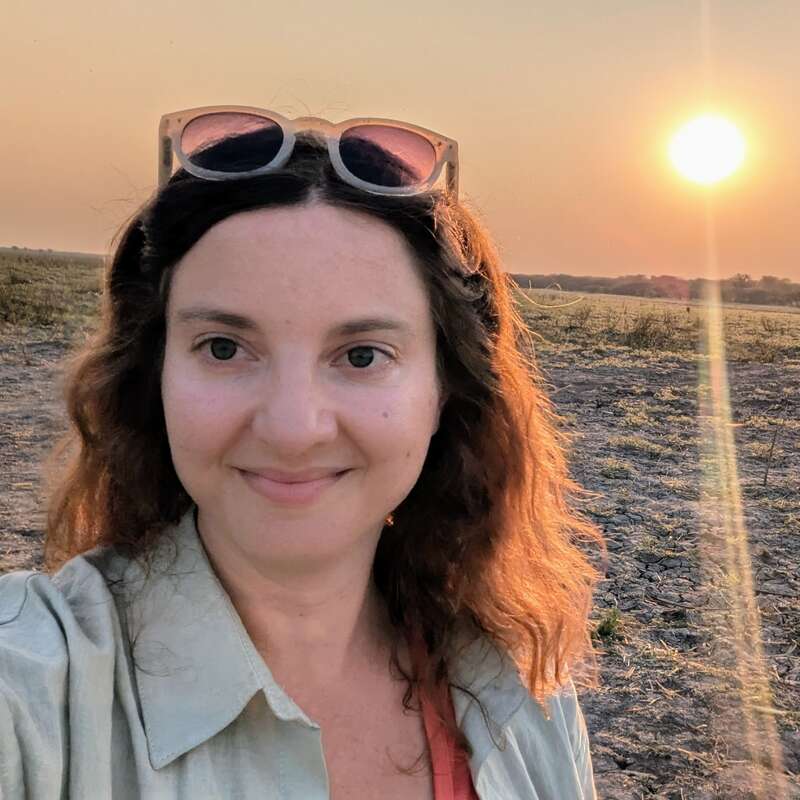About Kulalu Camp
Originally established as a hunting camp, Kulalu is one of the oldest properties in the Tsavo region.
Following the hunting ban in 1977 the camp caters for photographic safaris, giving access to both Tsavo East National Park and also the quieter Galana Conservancy. With only six tents, it is a small, comfortable camp in a scenic location by the Galana River.
Kulalu is a simple camp at heart, however what it lacks in luxury it makes up for in its remote location, relaxed atmosphere and friendly service. The long established team of staff acts like one extended family, and arriving at the camp feels like home from home. We love this quieter region of the wider Tsavo ecosystem and Kulalu is a great base if you're looking to avoid the crowds.
Our view
Kulalu is a simple camp at heart, however what it lacks in luxury it makes up for in its remote location, relaxed atmosphere and friendly service. The long established team of staff acts like one extended family, and arriving at the camp feels like home from home. We love this quieter region of the wider Tsavo ecosystem and Kulalu is a great base if you're looking to avoid the crowds.
Accommodation
6 safari tents
Children
Best for 8+
Open
All year
Activities

4WD Safari

Birdwatching

Private activities
Traveller reviews of Kulalu Camp
4 real, un-edited reviews from Expert Africa's travellers.
Arrived 6 Sep 2023, 3 nights
"Kulalu Camp review"
Overall rating: Excellent
Arrived 23 Jan 2023, 6 nights
"Kulalu Camp review"
Overall rating: Excellent
Arrived 5 Feb 2019, 3 nights
"Authentic safari feel at Kulalu camp"
Overall rating: Excellent
Arrived 4 Jun 2017, 3 nights
"You can do more here"
Overall rating: Good
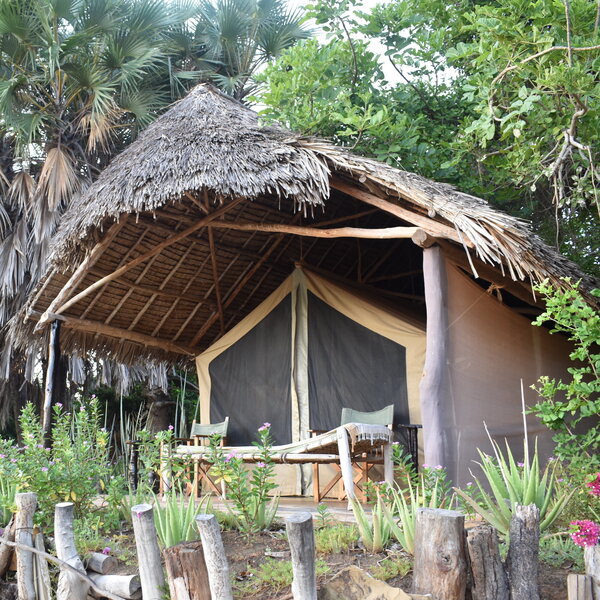
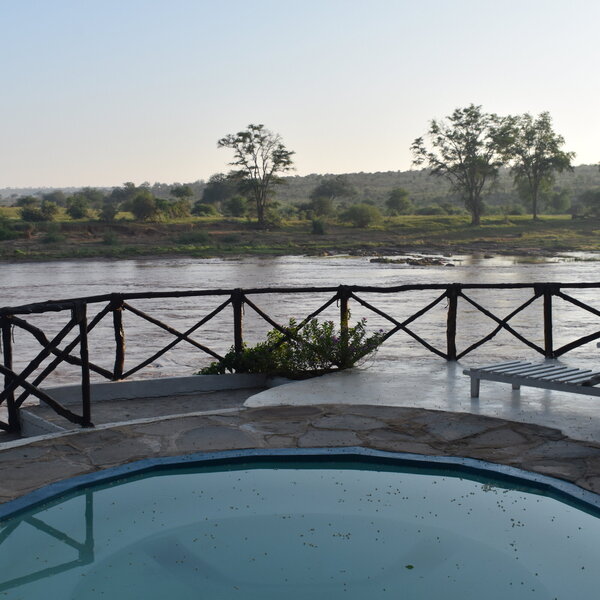
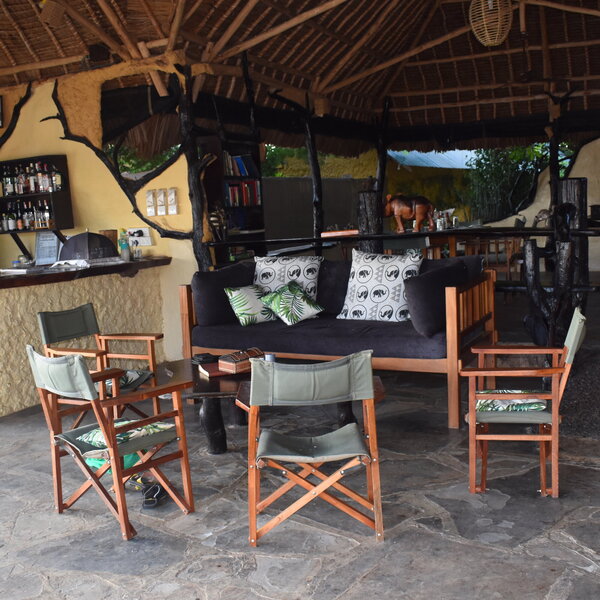
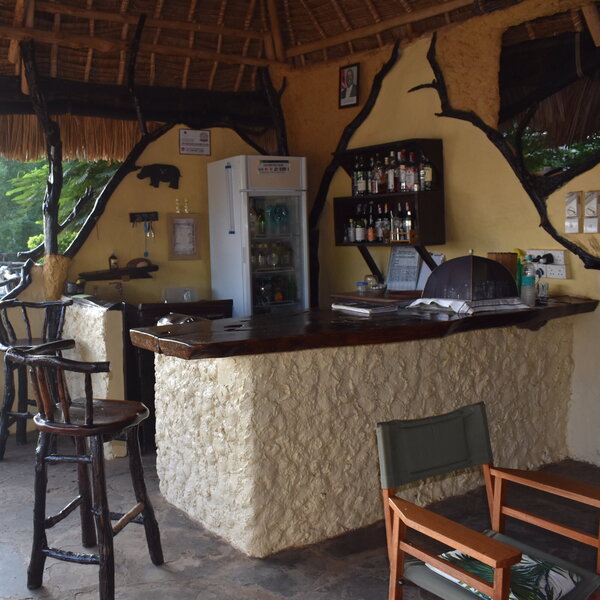
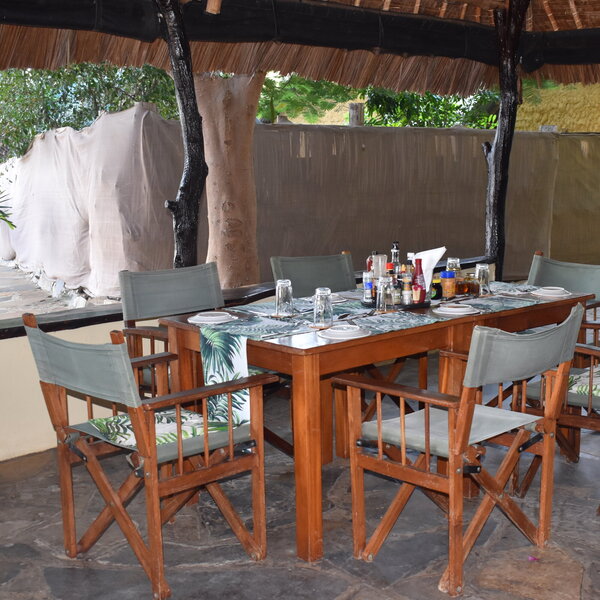
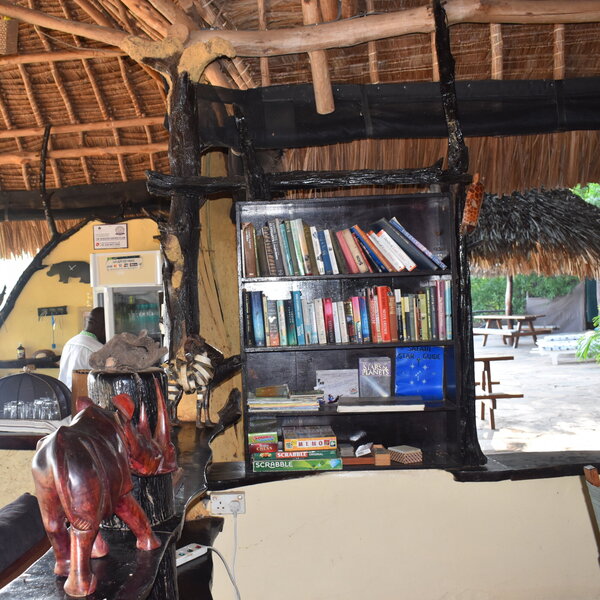
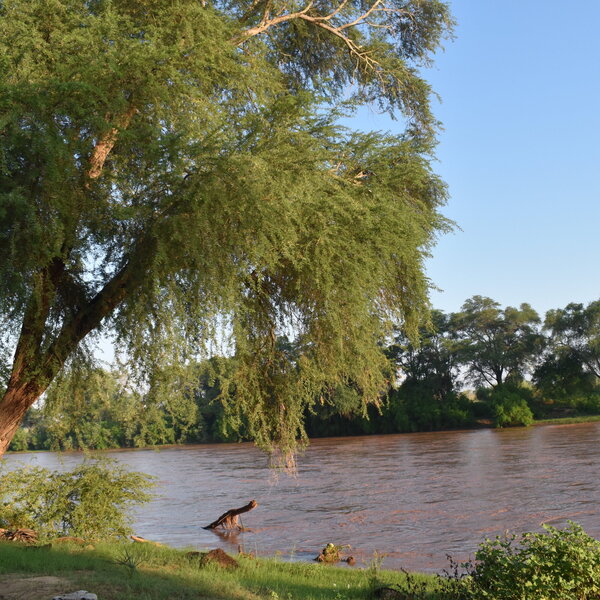
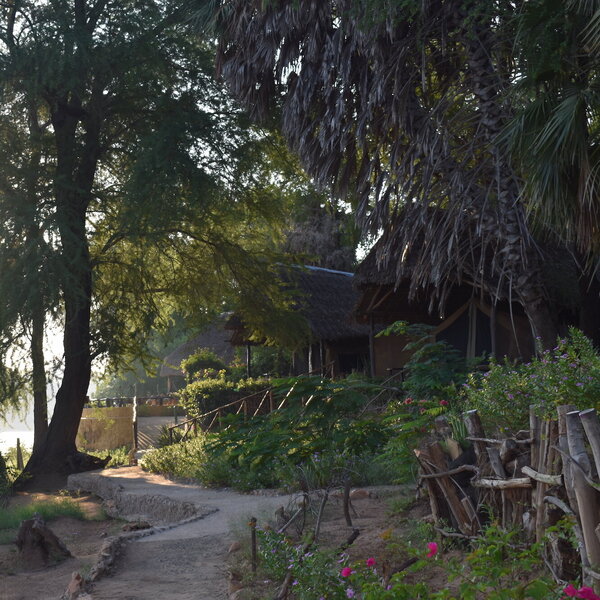
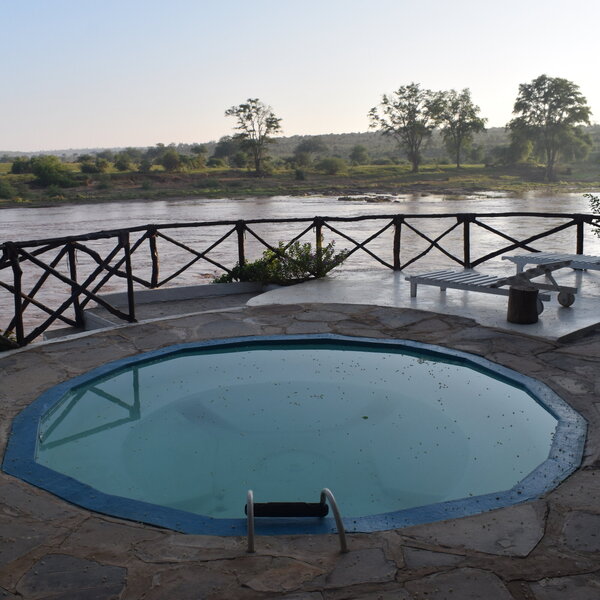
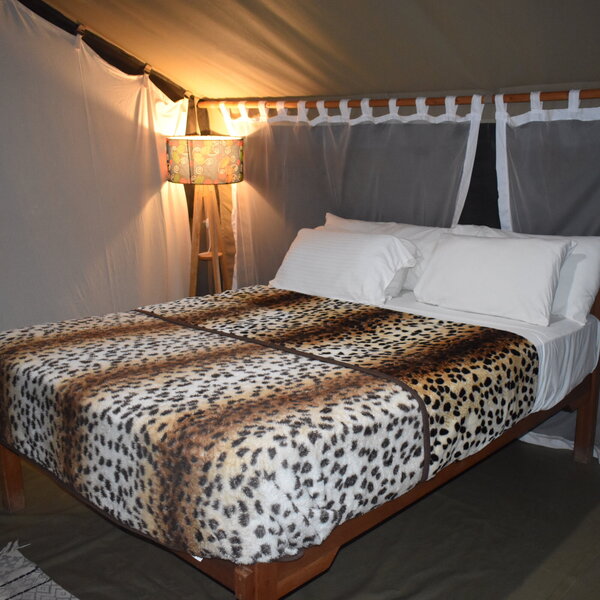
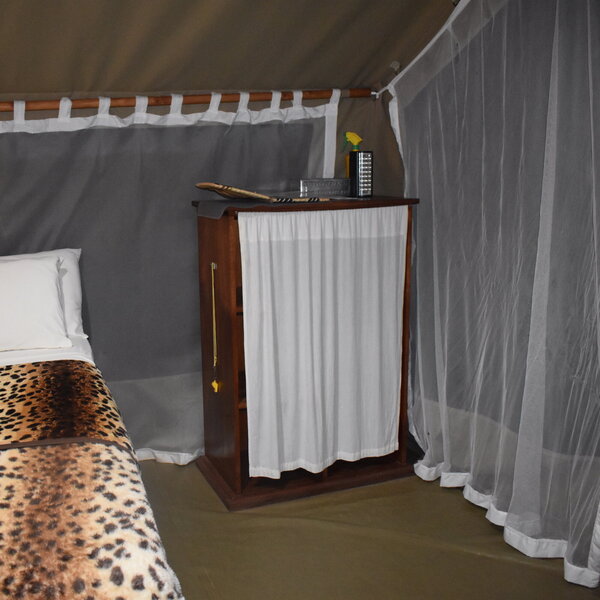
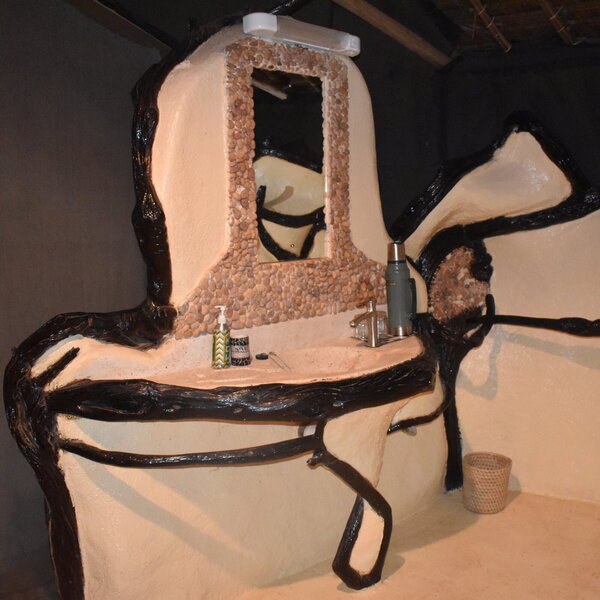
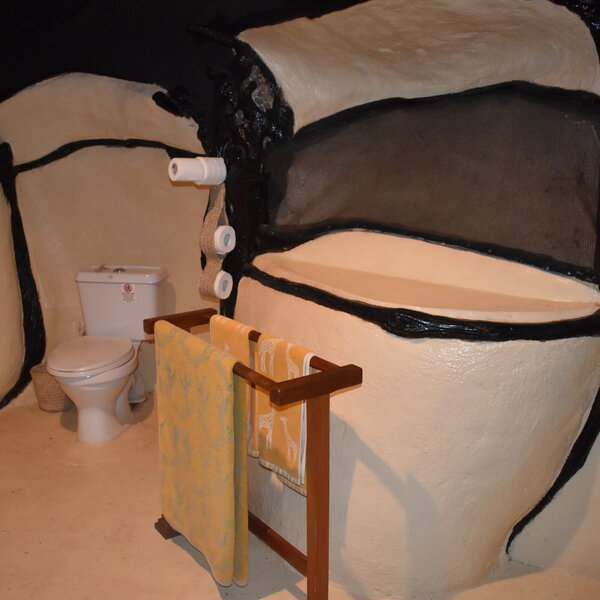
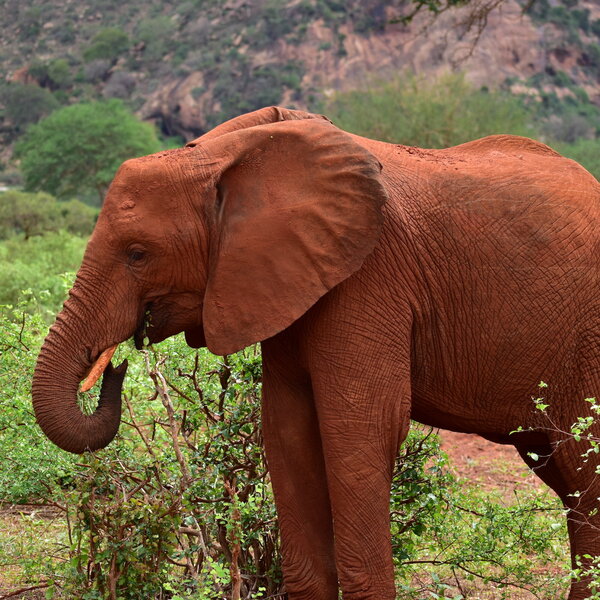
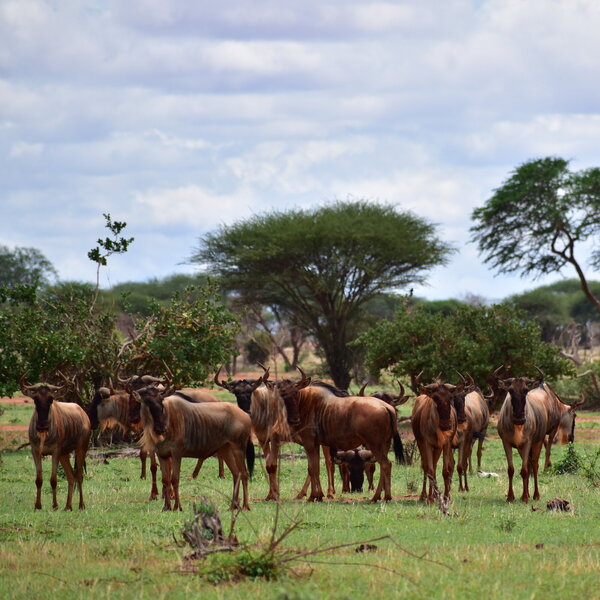
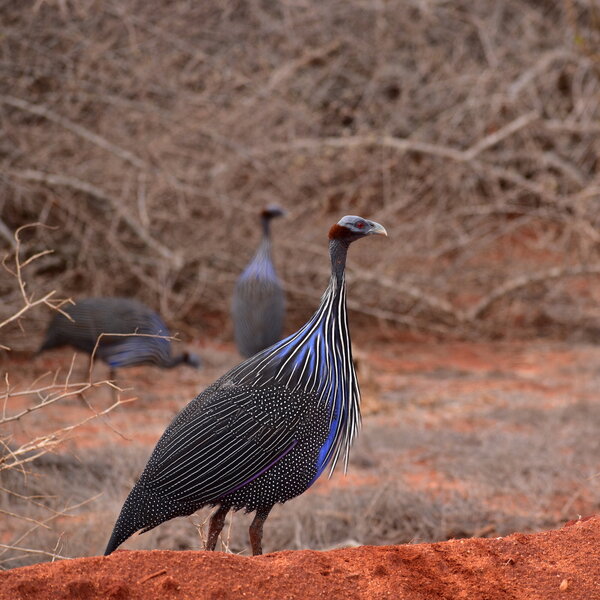
Expert Africa's gallery
When we travel we take lots of photos ourselves to give you a real and un-edited view of the safaris. See our 40 pictures of Kulalu Camp to get the candid view.
View galleryKulalu Camp: Our full report
Originally established as a hunting camp, Kulalu is one of the oldest properties in the Tsavo region.
Following the hunting ban in 1977 the camp caters for photographic safaris, giving access to both Tsavo East National Park and also the quieter Galana Conservancy. With only six tents, it is a small, comfortable camp in a scenic location by the Galana River.
The lounge and dining area is an open sided structure covered by makuti thatch overlooking the Galana River. As with the rest of the camp it is simple in design, but with cosy seating areas and friendly staff behind the bar it feels very welcoming and unpretentious. The use of natural materials and wooden animal carvings help to create the feeling of being on safari, enhanced by the occasional grunts of hippos in the river. To the front, a flagstone patio with stone tables serves as a dining area for lunch and dinner. Individual dining can easily be arranged, however Kulalu is a sociable little camp and guests often choose to dine communally. In one corner is a tea and coffee station with hot water always available, and guests are encouraged to help themselves. Many of the staff at Kulalu have been at the camp for decades, and their passion for Kulalu really shines through, creating a wonderfully relaxed and homely atmosphere.
There are just six guest tents at Kulalu, strung along the banks of the Galana River. Two of these are slightly set back although all have river views from their small verandahs at the front. The tents are relatively small and simply furnished with either double or twin beds, wooden shelving for clothes and personal items, along with a floor lamp and standing fan. A torch is provided. Animal print blankets and patterned rugs add a pop of colour. At the back of each tent is a large en-suite bathroom, constructed from natural wood, giving them an organic, free-flowing form. The bathrooms are fairly simple yet well thought out, with a toilet, washbasin, bench seat and a large shower area with a safari shower, using an overhead tank filled on request with warm water – in this low-altitude, equatorial climate you probably won't want it to be hot. This 'bucket shower' can hold 20 litres of water – usually more than enough for a good wash and to shampoo your hair. More warm water can be provided on request if you need it: it's a simple, but effective system.
Kulalu also has one L-shaped family tent which consists of one double and one twin bedroom, sharing and adjoining bathroom. Given its size, Kulalu also lends itself to be booked exclusively by small groups.
There is a small plunge pool, or ‘cuddle puddle’ as they affectionally refer to it, adjacent to the main area and facing the river. This is large enough for up to eight people to sit on the submerged benches, swap stories and relax with a drink. It is a great little addition and a popular spot.
Kulalu doesn't have its own resident guides and most guests staying here come with their own guide and vehicle. Expert Africa arranges private guiding for our travellers staying at the camp. Kulalu’s location means that guests can choose to either go on safari in Tsavo East National Park, the gate of which is around a 20-minute drive from the camp, or alternatively visit the Galana Conservancy, which neighbours the camp, just to the north of the Galana River. The conservancy is accessed for the majority of the year by a concrete causeway or drift across the river, however following periods of heavy rain this can be impassable.
The Galana Conservancy covers around 60,000 acres (240km²), encompassing the Lali Hills, which with an elevation of 360m mark the high point of the conservancy. Geographically it is a similar landscape to Tsavo East, with red sandy soil and open areas dotted with acacias and smaller shrubs. The Galana Conservancy is unfenced, with this region acting as an important wildlife corridor, and wildlife moves freely between the national park and the conservancy. The conservancy however is much quieter than Tsavo East and you are likely to see far fewer vehicles here. In 2021 the management of the Galana Conservancy was taken over by the Sheldrick Wildlife Trust which has been working on conservation initiatives in the area, including the establishment of several anti-poaching teams to tackle the illegal bushmeat trade. While conservation efforts are still a work in progress, there has already been a noticeable increase in wildlife numbers in the area, with many more animals taking up permanent residence in the conservancy.
Activities
4WD Safari
Birdwatching
Private activities
Families & children
- Attitude towards children
- Kulalu welcomes children of all ages.
- Property’s age restrictions
- None
- Special activities & services
- There is a small pool and selection of board games, however there are no child-specific activties.
- Equipment
- None
- Generally recommended for children
- Kulalu is surrounded by a discreet electric fence, however we advise that younger children are supervised at all times, particularly around the pool. The camp has a relaxed atmosphere and families are made to feel welcome.
Food & drink
- Usual board basis
- Full Board
- Food quality
- The food at Kulalu Camp is hearty and wholesome, and surprisingly tasty for a simple tented camp. Much of the produce comes from the camp's own kitchen garden and the chefs (Johnny and Baraka) will come to chat to guests about the menu for the day. You're welcome to make requests and they will tailor the meals to your preferences. Breakfast can either be eaten in camp (with fresh fruit, toast, and hot items cooked to order), or packed up to be taken on a morning game drive. During our stay we opted for a packed lunch of cold pizza, a boiled egg, fruit, and banana cake which we ate at one of the designated picnic sites in Tsavo East. Alternatively you can have a simple, cooked lunch back at the camp. Dinner normally consists of three courses, typically starting with a vegetable soup (we thought that the homemade tomato soup was excellent!). One evening we then had steak with chips and vegetables, while on another occasion we tucked into a nyama choma ('grilled meat') barbecue with a selection of grilled meat served with green beans and roast potatoes, followed by vanilla ice cream.
- Dining style
- Mixture of group dining and individual tables
- Dining locations
- Indoor and Outdoor Dining
- Further dining info, including room service
- Limited room service can be arranged on request
- Drinks included
- Flasks of drinking water are provided in the rooms, however all other drinks are at extra cost. These are around $3 for a soft drink or $5 for a beer or a glass of wine.
Our travellers’ wildlife sightings from Kulalu Camp
Since mid-2018, many of our travellers who stayed at Kulalu Camp have kindly recorded their wildlife sightings and shared them with us. The results are below. Click an animal to see more, and here to see more on our methodology.

100% success

100% success

100% success

100% success

100% success

100% success

100% success

67% success

67% success

67% success

0% success

0% success

0% success

0% success

0% success

0% success
Getting there
- Location
- Tsavo East National Park, Kenya
- Ideal length of stay
- Stay two or three nights to explore the Tsavo East region.
- Directions
- Kulalu Camp is around a 90-minute drive from Malindi Airport, and around a 20-minute drive from the Sala Gate of Tsavo East National Park.
- Accessible by
- Fly-and-Transfer
Communications
- Power supply notes
- There is a backup generator.
- Communications
- There is limited Wi-Fi in the communal area, which is sufficient for sending photos and emails but not adequate to stream videos or upload / download large files. There is good phone signal with Safaricom.
- TV & radio
- There is no TV at Kulalu
- Water supply
- Borehole
- Water supply notes
- Water for washing and showers comes from the river, it is filtered before use. Drinking water is bottled and transported in.
Health & safety
- Malarial protection recommended
- Yes
- Medical care
- Staff are first-aid-trained and there is a first aid kit on site. Watamu hospital is a couple of hours away by road.
- Dangerous animals
- High Risk
- Security measures
- The camp is fenced, however you are still escorted to your tent after dark. There is 24-hour security in place.
- Fire safety
- Staff are trained and there are fire extinguishers dotted around the camp. They have a fire hose which can be used to pump water from the river.
Useful info
- Disabled access
- On Request
- Laundry facilities
- A laundry service is included in the cost of your stay, with items being hand washed and line dried. For cultural reasons they do not wash underwear, however washing powder is provided in your tents.
- Money
- There is a safe in the manager's office for your valuables.
- Accepted payment on location
- All major currencies are accepted, including GB pounds and US dollars. Most cards, including Visa and Mastercard, are accepted without surcharge, however they don't accept Amex.
Plan and book your trip with Expert Africa
All of our trips are tailor-made, so we'll always adapt them to suit you. Talk to an Expert and let us plan and arrange your perfect trip.

Talk to an Expert
Call or email us now! We’ll match you with the Specialist in our team who is best suited to help you. Then together we can start planning your trip.

Set up your itinerary
Based on our experience and your ideas, your specialist will create a detailed, costed itinerary. We’ll refine it together, until we have a trip that you’re perfectly happy with.

Prepare for your trip
The same Specialist will make the seamless arrangements for your trip, send you detailed travel documents, and be available to answer any questions before you depart.

Travel with peace of mind
After you set off, you’ll be cared for by our partners in Africa, most of whom have worked with Expert Africa for decades. And if you ever need us urgently, we’re available 24/7.

When you return
We love to learn about your trip, and so will always be grateful if you’ve the time to give feedback to your Specialist when you return.
Kulalu Camp's location
Look closer at the environment and surroundings of Kulalu Camp.
Other lodges in Tsavo East National Park
Alternative places to stay in this same area.
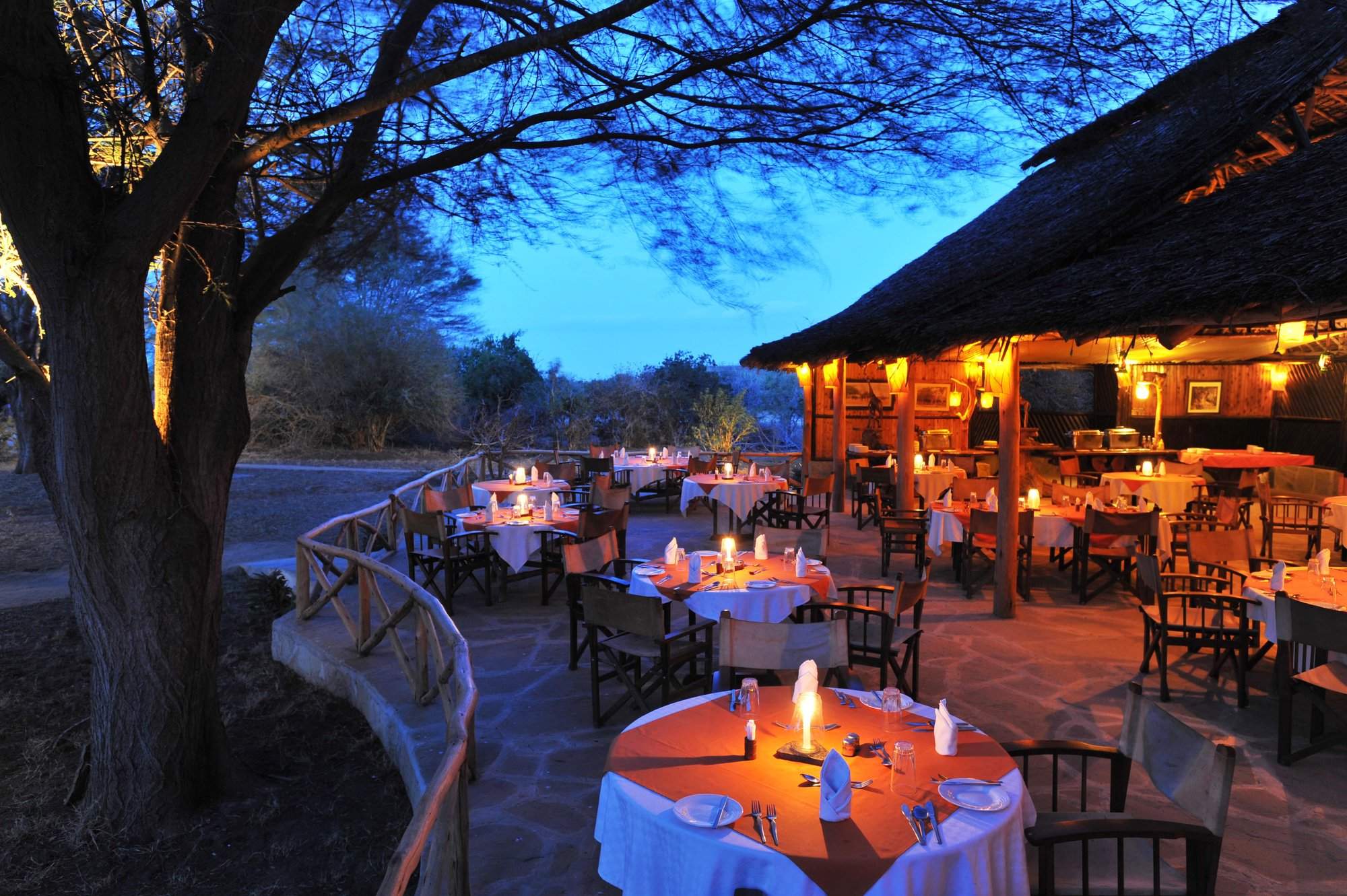
Satao Camp
Satao Camp is a traditionally styled, unfenced tented camp of generously sized tents set under shady trees around one side of a waterhole on a wildlife-rich plain in a remote part of Tsavo East National Park.
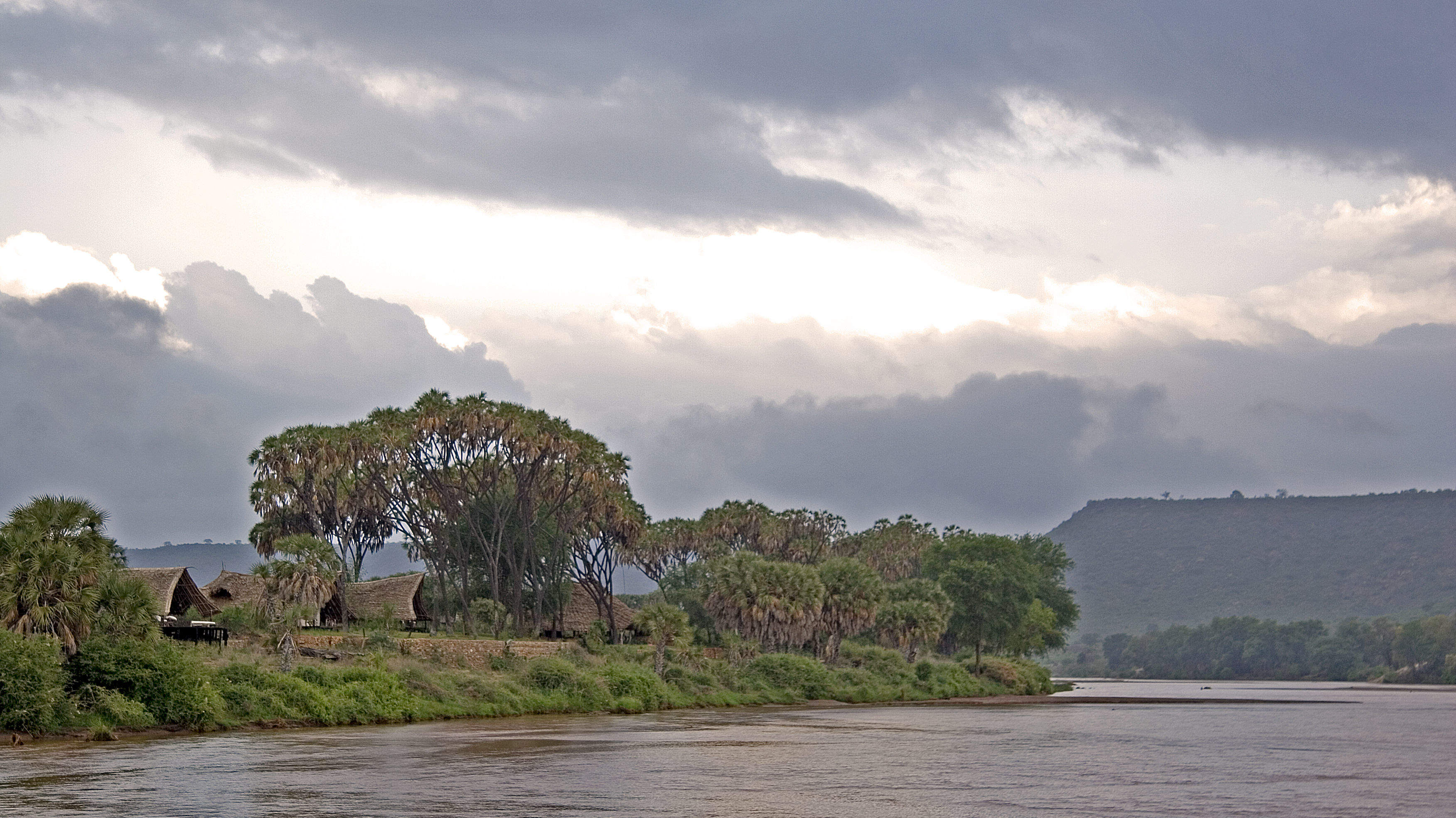
Galdessa
Galdessa is Tsavo East National Park’s best safari camp, sitting in a spectacular location on the banks of the broad Galana River.
When to go to Tsavo East National Park
Our month by month guide: What it's like to visit Kulalu Camp in Tsavo East National Park
Jan
Feb
Mar
Apr
May
Jun
Jul
Aug
Sep
Oct
Nov
Dec
Kenya in January
Clear, hot days and warm nights make this high season a popular time for safaris and it’s also good for diving and snorkelling as water clarity is excellent and gets better as the dry season progresses. Most lodges and tented camps treat January after the New Year week is over, as mid-season, making it a good compromise in terms of value for money with reasonably reliable, dry weather and some greenery left in the landscape.
Expert Africa bases its description of climate and weather in January, like the other months of the year, on the climate records of roughly the last 100 years, and it's fair to say that the weather and seasons since the beginning of this century have been highly irregular and unpredictable.
- On average, January is the second driest month of the year
- Elephants dig waterholes in the dry riverbed in the Samburu reserve.
- Wildebeest and many antelope have their calving season, to February.
- Migrant birds are seen in huge numbers, especially in the Rift Valley.
- Sea water clarity around the coral reefs generally good.
Our view
Fantastic: the very best time to visit
Weather in January
Kenya in February
With the short dry season well established, the grass grazed down and wildlife gathering close to water points, this is still a good time for a safari. Good water clarity in the Indian Ocean's coastal waters makes for excellent diving and snorkelling conditions.
Expert Africa bases its description of climate and weather in February, like the other months of the year, on the climate records of roughly the last 100 years, and it's fair to say that the weather and seasons since the beginning of this century have been highly irregular and unpredictable.
- On average, February is the driest month of the year.
- It’s sometimes possible to swim with whale sharks at Diani Beach.
- Migrant birds are still seen everywhere, especially near water.
- This is usually peak calving season for wildebeest and many antelopes.
- This month is often the hottest of the year, especially on the coast.
Our view
A very good time to visit
Weather in February
Kenya in March
Hot, increasingly humid weather – with good diving and snorkelling conditions at the start of the month – gives way to rains and lower accommodation costs. Expert Africa bases its description of climate and weather in March, like the other months of the year, on the climate records of roughly the last 100 years, and predicting the seasons since the beginning of this century has been difficult.
March is the month when – traditionally – intensely hot conditions build up until a cloudburst finally happens at the end of the month or in early April, to relieve the humidity. As ever, regional variations across the country can greatly impact on visitors' experiences.
- Sea-water clarity is best for diving before the long rains start.
- Visitor numbers are low, though the Easter holidays can be busier.
- Night skies can be scintillatingly clear in early March.
- Cropped down savannah grasses can make it easier to see the wildlife.
- Temperartures climb high, especially at lower elevations.
Our view
A good time to visit, with pros & cons
Weather in March
Kenya in April
April sees the full onset of the southeast monsoon wind or kusi, which heralds the long rains. Temperatures drop soon after the rains are established and you’ll often have facilities largely to yourself in this more affordable low season, sometimes known as the "green season". The bush quickly springs to life, with greenery sprouting almost before your eyes. While you're likely to get a fair number of heavy showers, the breaks in the rain can yield sparklingly clear conditions.
With the dust settled and bright sun piercing the clouds, conditions can be sublime for photography, especially first thing in the morning or in the late afternoon with another storm brewing. You may be lucky, or you may find conditions very wet and muddy.
- A wet month, the coast often gets more than 300mm (12in) of rain.
- Sunny spells can provide great light for photography.
- Buffalo and zebra calving season often happens in this month.
- Baby crocodiles hatch, for example on Central Island in Lake Turkana.
- Palearctic migrant birds gather to fly north to breeding grounds.
Our view
A time to avoid if possible
Weather in April
Kenya in May
While game viewing can be trickier as vegetation runs riot, between the cloudbursts the colours and light are great for photography at this time of year. Expert Africa bases its description of climate and weather in May, like the other months of the year, on the climate records of roughly the last 100 years, and while it's reasonable to expect heavy rains in many parts during this month, especially on the coast, the rains don't always come evenly or in some areas come at all.
In an El Niño year, the so-called long rains that normally are established across much of the country by May can be meagre, to the despair of farmers. On the other hand in a La Niña year, the long rains can bring floods. On the coast, the monsoon winds make the climate much more predictable, with heavy rains common throughout this month.
- Frogs breed in the ponds in the Arabuko Sokoke Forest near Watamu.
- Wildebeest, impala and other grazers are in rut (the breeding season).
- Kilimanjaro looks its best as heavy rain falls as snow on the summit.
- There's a sharp peek of rainfall on the coast with many rainy days.
- Accommodation prices are uniformly low, while some camps close.
Our view
A time to avoid if possible
Weather in May
Kenya in June
The rains give way to cloudy, cooler weather, often making for comfortable conditions by the end of the month, especially in the highlands. Starting from mid-June or the beginning of July and running until the end of October, this is the high season, and accordingly has higher accommodation rates and – at least until early September – higher numbers of visitors.
While the early part of June can often be rainy on the coast, it can be a great time to go on safari, with fresh greenery, many young animals and good photographic conditions with clear air.
- The Taru Desert, inland from the coast, is carpeted with flowers.
- The Lake Turkana Cultural Festival is held in Loiyangalani.
- Madaraka Day (commemorating self rule) is 1 June.
- The annual Lewa marathon runs a course through the wildlife.
- The Diani Rules "sports" event rips up the rulebook at Diani Beach.
Our view
A good time to visit, with pros & cons
Weather in June
Kenya in July
Kenya’s “winter" season sets in (winter is a misnomer but locals feel the change), and the highlands can be rather grey. Skies are often cloudy and the days can be surprisingly cool, with an average daytime high in many highland safari areas of 15-20°C and night-time temperatures dropping below 10°C in Nairobi and the highlands. Lower parts of the country and the coast are usually warm and dry, typically reaching highs of around 25°C with lows in the high teens.
As this is the start of the high season, coinciding with the usual arrival of the wildebeest migration in the Maasai Mara, July is a busy month. Ask your Expert Africa specialist to advise on how to avoid the crowds, which is not that difficult to do.
- The wildebeest migration usually reaches the Maasai Mara in July.
- Simbi Lake (Kisumu) and Crater Lake (Naivasha) can attract flamingoes.
- Watersports start to pick up and some surfing is possible at Malindi.
- Afternoon thunderstorms are a common feature in the Maasai Mara.
- The sea can be choppy along the coast, making diving difficult.
Our view
A good time to visit, with pros & cons
Weather in July
Kenya in August
The Great Migration fills the plains of the Maasai Mara, and school’s out, so the park roads are full of tourists – ask your Expert Africa specialist for advice on crowd avoidance tactics. Choose a private conservancy rather than a public national park or national reserve for quieter conditions.
Like July, August is generally mild and relatively dry in the safari areas, but it can be very chilly in the highlands, even in the middle of the day, and hail occasionally falls above altitudes of around 2,400m (8,000ft). Nairobi can be disappointingly overcast, with low cloud.
- Apart from Christmas holidays, this is the busiest month of the year.
- Late August sees peak wildebeest drama at the Mara River crossings.
- Coastal winds are good for kite- and wind-surfing.
- Few mosquitoes are around at this generally dry time of year.
- The annual Camel Derby takes place in the Samburu capital, Maralal.
Our view
A good time to visit, with pros & cons
Weather in August
Kenya in September
The skies clearing of cloud signals the start of hot, dry weather with little chance of rain – and, after the first few days of the month, far fewer visitors – making the latter part of September a good time for a quieter safari. While early September is often good for dramatic migration crossings along the Mara River, you might consider deliberately postponing your trip until later in the month, when the migration can still be very impressive and visitor numbers fewer.
If tourist surges are somewhat predictable, however, the patterns of the wildebeest migration are more volatile, and like all of Expert Africa's climate and weather assessments, they are based on accumulated years of experience rather than guaranteed certainty.
- This is still high season, with prices to match.
- Many river crossings take place on the Mara river in both directions.
- Natural bush fires flush out insects and small animals for predators.
- The Rift Valley Music Festival takes place by Lake Naivasha.
- With school holidays over by early September, late-month is quieter.
Our view
Fantastic: the very best time to visit
Weather in September
Kenya in October
Still hot, mostly dry and not too busy, this is many people’s preferred month for a safari, and it’s also good for diving and snorkelling. The wildebeest and zebra herds of the great migration are often still to be seen, though in dwindling numbers. The swamps of Amboseli attract thirsty wildlife including large herds of elephants.
While we wouldn't expect much rain across most of the country this month, the climate has become so unpredictable that you can never say never, and the possibiity of the short rains – usually associated with November to mid-December, starting early, can't be discounted.
- This month sees the tail end of the great migration in the Mara.
- Palearctic migrant birds start to arrive, staying until March.
- Turtle nests hatch at Watamu, until November.
- Amboseli elephants focus on the swamps for their daily water.
- The Indian Ocean monsoon winds turn from southeast to northeast.
Our view
A very good time to visit
Weather in October
Kenya in November
The northeast monsoon wind or kaskazi heralds the start of the “short rains", usually some time in the second half of the month. From November to mid-December, this is the low season, and accordingly has lower accommodation rates and lower visitor numbers. Across most of the country you can expect warm, somewhat cloudy weather, with occasional heavy showers and localised flooding.
Expert Africa bases its description of the climate in November, like the other months of the year, on the records of roughly the last 100 years, and it's fair to say that the seasons since the beginning of this century have been highly irregular and unpredictable: some years the short rains don't come at all, or don't reach every part of the country. In an El Niño year, the November short rains can be very heavy, but in a La Niña year, they can fail completely.
- Swimming with dolphins in Lamu can be done from now until April.
- Birders gather at Ngulia in Tsavo West to ring Palearctic migrants.
- The Lamu Cultural Festival takes over the town and Lamu Creek.
- Agricultural shows often take place regional market towns.
- This is low season, so camps can be great value, with special offers.
Our view
A good time to visit, with pros & cons
Weather in November
Kenya in December
In a typical December, the rains usually finish by middle of the month, leaving the landscape looking its best, under clear blue skies, and heralding the start of the second peak tourist season from around 20 December to the first week of January. Our assessment of the likely weather in December, like the other months of the year, is based on climate records, and it's fair to say that the seasons since the beginning of this century have been highly irregular and unpredictable.
Christmas can sometimes be wet, but most years the rains have finished a week or two earlier, with the festive season ushering in the perfect combination of clear skies and sunshine by day and starry nights.
- Christmas and New Year are busy, with the lodges and camps full.
- Rates are highest after 24 Dec, with supplements on public holidays.
- Republic Day and Independence day are celebrated on 12 December.
- Good kite- and wind-surfing restarts, with strong northeasterly winds.
- Mango season begins, providing excitement for primates and elephants.
Our view
A good time to visit, with pros & cons
Weather in December

Looking for inspiration on where to travel next?
Visit our trip chooser to explore your options and find inspiration for your perfect African adventure
Inspire me